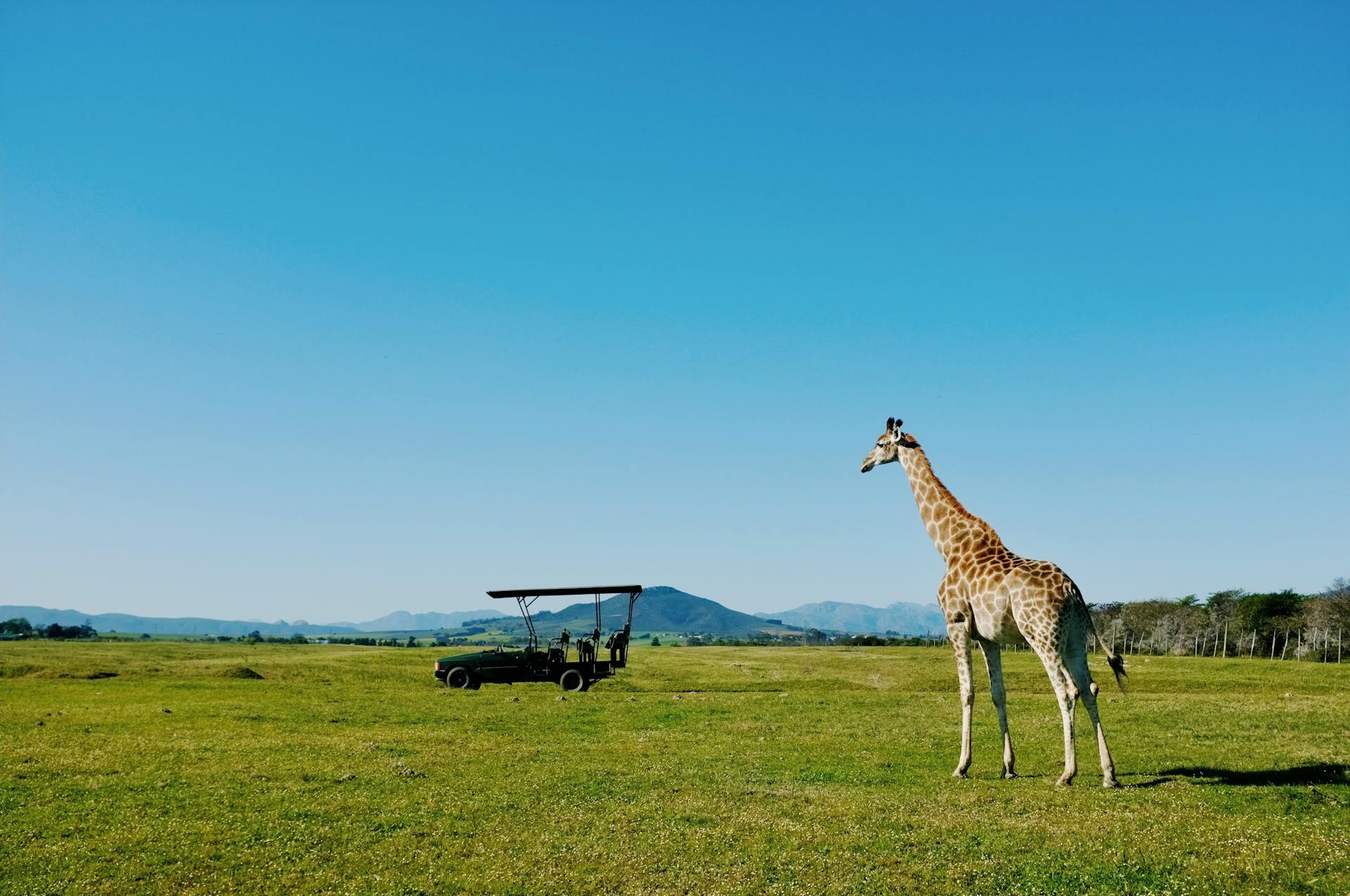Imagine standing quietly on a sunlit trail, surrounded by towering trees, when suddenly, a majestic elk steps into view, its antlers glistening in the soft morning light. National parks are not just destinations; they are vibrant sanctuaries for wildlife, teeming with life and wonder. The breathtaking landscapes and diverse ecosystems within these protected areas play a crucial role in preserving not only animal populations but also the intricate web of life they support. From the haunting calls of wolves in Yellowstone to the playful antics of marine iguanas in the Galápagos, every national park offers a unique window into the natural world.
In this article, we will explore some of the best wildlife experiences these national parks have to offer. Each park provides visitors with unforgettable moments, whether it’s witnessing the raw beauty of a lion hunt in Kruger or marveling at the sight of thousands of migrating caribou in Banff. Join us as we journey through these remarkable landscapes, highlighting the exceptional wildlife encounters that await, and inspiring you to embark on your own adventure into the wild heart of nature.
Why National Parks Are Essential for Wildlife
National parks are essential for wildlife conservation, serving as vital sanctuaries where animals can thrive in their natural habitats. These protected areas play a critical role in safeguarding ecosystems from human encroachment, pollution, and habitat destruction. By establishing national parks, governments and conservation organizations work diligently to maintain biodiversity and ensure that various species have a safe environment to reproduce, feed, and roam. The conservation efforts within these parks extend beyond the boundaries of their land, inspiring broader initiatives aimed at preserving the natural world for future generations.
Moreover, national parks offer significant educational value and promote ecotourism, allowing visitors to learn about wildlife and ecosystems firsthand. Through guided tours and visitor centers, park staff can educate the public about the importance of conservation and the need to protect fragile ecosystems. This interaction fosters a greater appreciation for wildlife, encouraging people to become advocates for environmental preservation. As ecotourism grows, it not only generates revenue for local communities but also provides the necessary funding for ongoing conservation efforts, making a positive impact on both nature and people.
The role of national parks in preserving biodiversity cannot be overstated. As ecosystems face unprecedented challenges due to climate change, habitat loss, and human activity, these parks become critical refuges for endangered and threatened species. By protecting the flora and fauna within their boundaries, national parks contribute to a healthier planet and ensure that future generations can experience the beauty and wonder of nature.
Best National Parks for Wildlife Experiences
Yellowstone National Park, USA
Yellowstone National Park, established in 1872 as the first national park in the world, is renowned for its stunning landscapes and rich biodiversity. It serves as a living laboratory for wildlife conservation, with a vast array of habitats that support an impressive variety of species. Visitors to Yellowstone can witness iconic animals such as bison, wolves, and bears roaming freely in their natural environment. The best times for wildlife viewing are early morning and late afternoon, when animals are most active. Unique experiences in the park include guided wildlife tours led by knowledgeable rangers and opportunities for photography that capture the breathtaking beauty of these magnificent creatures in their natural habitat.
Kruger National Park, South Africa
As one of Africa’s largest game reserves, Kruger National Park is a prime destination for wildlife enthusiasts. The park is home to the famous Big Five—lions, elephants, rhinos, leopards, and buffalo—drawing visitors from around the globe. With diverse landscapes ranging from savanna to bushveld, Kruger offers various safari options, including self-drive adventures and guided tours led by experienced rangers. For a more immersive experience, visitors can partake in walking safaris and night drives, providing a unique opportunity to explore the park’s ecosystems up close and witness nocturnal wildlife in action.
Banff National Park, Canada
Banff National Park, nestled in the Canadian Rockies, is a stunning landscape of towering mountains, glacial lakes, and abundant wildlife. It is known for its thriving populations of elk, bears, and mountain goats. Key viewing spots include Vermilion Lakes and Bow Valley, where visitors can catch glimpses of these animals in their natural habitats. Seasonal events, such as wildlife migrations and calving seasons in spring, offer additional opportunities for unforgettable wildlife experiences, making Banff a must-visit destination for nature lovers.
Chobe National Park, Botswana
Chobe National Park is celebrated for its extraordinary wildlife, particularly its large elephant herds, which are among the largest in Africa. The park’s diverse ecosystems, including riverfronts and wetlands, create ideal habitats for a variety of species, including hippos and crocodiles. Visitors can embark on river cruises that provide a unique perspective on wildlife viewing, allowing them to observe animals as they come to the water’s edge. Chobe is also a birdwatcher’s paradise, boasting over 400 species of birds, making it a prime destination for both wildlife enthusiasts and ornithologists.
Galápagos National Park, Ecuador
Galápagos National Park is a UNESCO World Heritage site known for its unparalleled biodiversity and unique wildlife found nowhere else on Earth. Visitors can encounter giant tortoises, marine iguanas, and blue-footed boobies, all of which have adapted to their specific environments. Activities such as snorkeling with marine life and guided island tours allow visitors to experience the park’s natural beauty intimately. The importance of conservation efforts in the Galápagos cannot be overstated, as the delicate ecosystems are threatened by invasive species and climate change, making it imperative for travelers to engage in responsible tourism to help protect this unique paradise.
This exploration of wildlife experiences in national parks not only highlights the wonders of nature but also underscores the importance of conservation and responsible travel. Each park offers a unique window into the wild, inviting visitors to forge a deeper connection with the natural world and understand their role in preserving it for generations to come.
Tips for Wildlife Watching in National Parks
When embarking on a wildlife-watching adventure in national parks, preparation and patience are key to enhancing your experience. The best times of day for wildlife viewing are often early in the morning or late in the afternoon when animals are most active. The soft, golden light of dawn and dusk not only provides better visibility for spotting animals but also makes for stunning photography opportunities. Researching specific wildlife patterns in the park you’re visiting can help you optimize your viewing times.
Patience and silence are vital when observing wildlife. Animals are sensitive to noise and movement, and a quiet approach increases your chances of getting close enough for a good look—or a great photo! Using binoculars can help you enjoy the sights without disturbing the animals, allowing you to observe their natural behaviors without interference. It’s also essential to respect their space; maintaining a safe distance ensures both your safety and the well-being of the animals.
Ethical wildlife observation guidelines are crucial for preserving the integrity of these habitats. Always stay on designated trails and paths, avoid feeding or provoking wildlife, and follow park rules regarding wildlife interactions. Your actions can significantly impact the natural behaviors of animals and the overall health of the ecosystem. Bringing along the right gear, such as high-quality binoculars and a good camera, can enhance your experience. A field guide to local wildlife can also enrich your understanding and appreciation of the animals you encounter.
Conclusion
The experiences of observing wildlife in national parks are more than just thrilling adventures; they are vital for fostering a connection between humans and nature. By visiting these parks, you support essential conservation efforts while enjoying the breathtaking beauty and diverse ecosystems they offer. The encounters you have, whether witnessing a wolf pack on the hunt or marveling at a flock of migratory birds, can leave a lasting impression and inspire a lifelong commitment to protecting these natural habitats.
As you plan your next outdoor adventure, consider the incredible wildlife experiences awaiting you in these national parks. Each park tells a unique story through its flora and fauna, inviting you to explore and appreciate the wonders of the natural world. Together, we can ensure that these beautiful landscapes remain vibrant and alive for future generations to enjoy.
We invite you to share your own wildlife experiences in national parks! What unforgettable moments have you had in these stunning natural settings? Additionally, consider getting involved in conservation efforts in your community or supporting organizations dedicated to protecting wildlife and their habitats. Every small action contributes to the larger goal of preserving our planet’s biodiversity and ensuring that future generations can experience the wonders of nature just as you have.
Frequently Asked Questions (FAQs)
1. What is the best time of year to visit national parks for wildlife viewing?
The best time to visit national parks for wildlife viewing often varies by location and species. Generally, spring and fall are excellent seasons as animals are more active during these times. Spring offers opportunities to witness births and migrations, while fall can showcase animals preparing for winter. It’s always a good idea to research specific parks for seasonal highlights.
2. Can I see wildlife during the day?
Yes, many animals can be observed during daylight hours, particularly in the early morning and late afternoon when they are most active. However, some species are nocturnal and are best viewed at night. Always check with park rangers or guides for the best times to spot specific animals.
3. What should I bring for wildlife watching?
To enhance your wildlife watching experience, consider bringing binoculars for distant viewing, a camera with a zoom lens for capturing photos, and a field guide for identifying animals. Wear comfortable clothing and sturdy shoes, and pack snacks and water for longer excursions. A notebook can also be handy for jotting down observations.
4. How can I safely observe wildlife in national parks?
Safety is paramount when observing wildlife. Always maintain a safe distance—generally, at least 100 yards from large animals like bears and bison and 25 yards from smaller animals. Avoid feeding wildlife or attempting to touch them, as this can disrupt their natural behavior. Following park rules and guidelines will help ensure a safe and enjoyable experience for both you and the animals.
5. Are guided tours worth it for wildlife viewing?
Guided tours can enhance your wildlife viewing experience significantly. Experienced guides are knowledgeable about animal behavior and park ecosystems, increasing your chances of spotting wildlife and providing valuable insights. Additionally, they often know the best times and locations for viewing specific species, making the tour a worthwhile investment.
6. How do national parks contribute to wildlife conservation?
National parks play a crucial role in wildlife conservation by protecting habitats, preserving biodiversity, and promoting responsible tourism. They provide safe havens for endangered species, conduct research to inform conservation strategies, and engage visitors in educational programs that raise awareness about the importance of protecting the environment.
7. Can I bring my pets to national parks?
Most national parks have strict regulations regarding pets. Typically, pets are not allowed on trails or in most park areas to protect wildlife and preserve natural habitats. Some parks may have designated pet-friendly areas, but it’s essential to check the specific rules for the park you plan to visit.
8. What should I do if I encounter wildlife up close?
If you encounter wildlife up close, remain calm and back away slowly while maintaining a safe distance. Do not approach or attempt to feed the animal. Give it space to move away, and avoid making sudden movements or loud noises that might startle it. Always prioritize your safety and the well-being of the wildlife.



